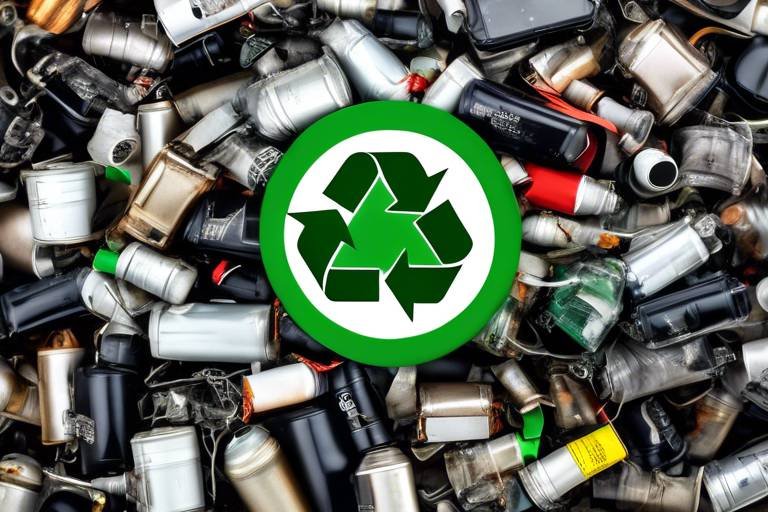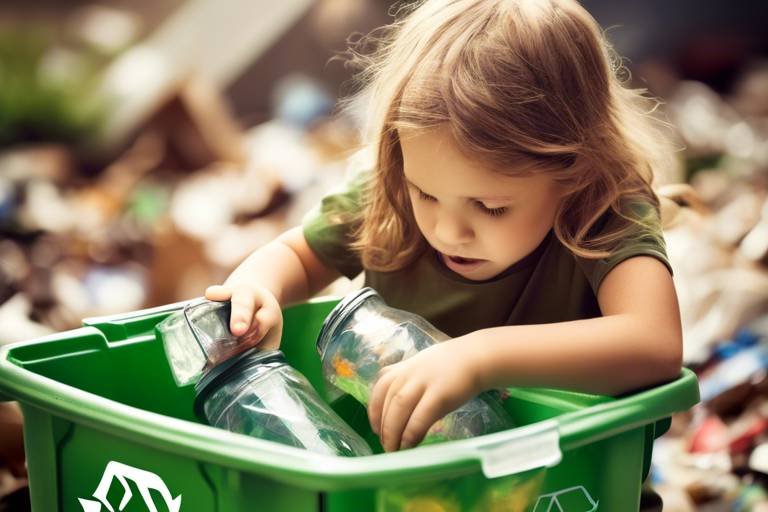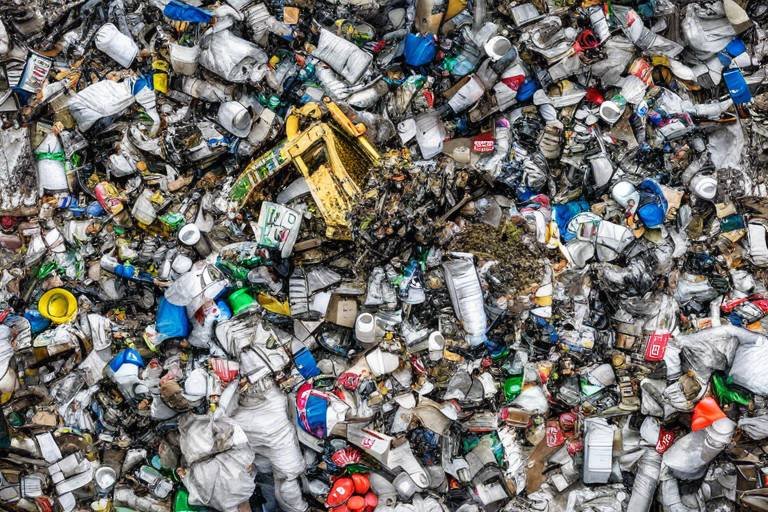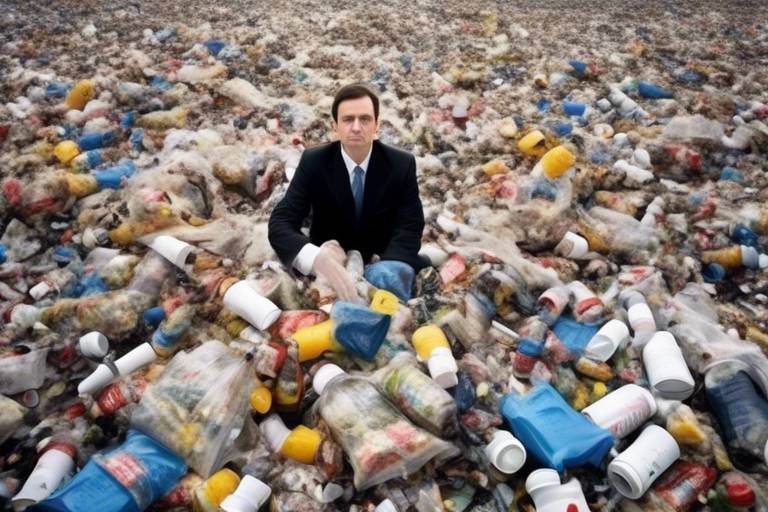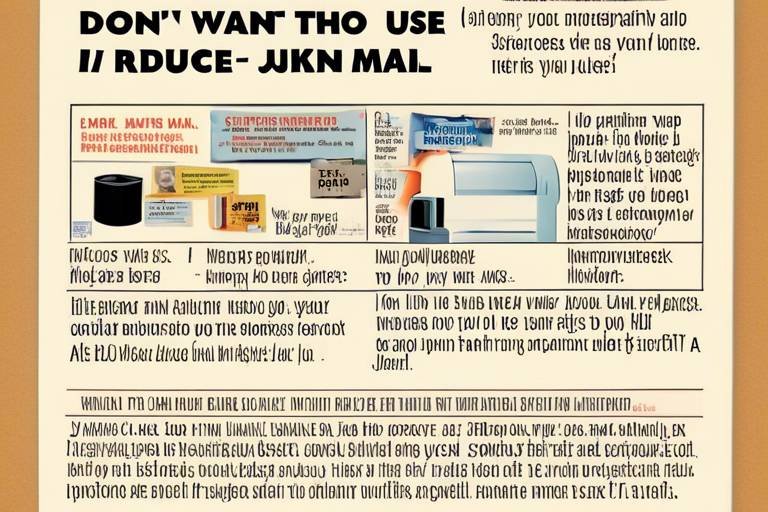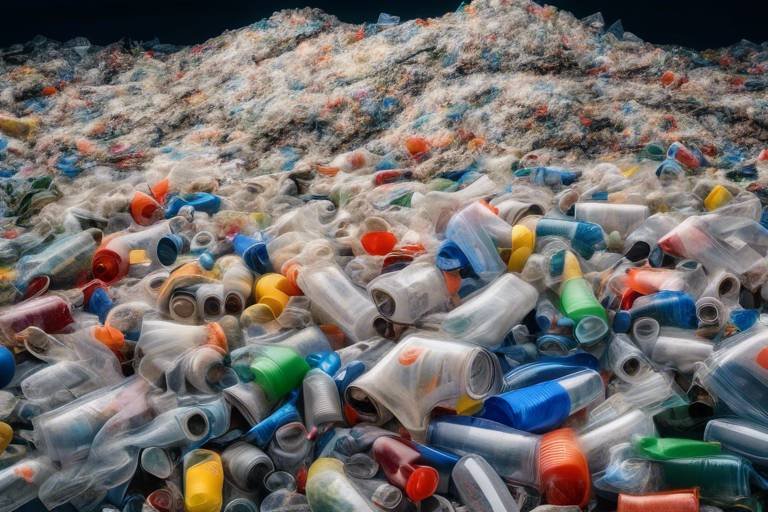How to Minimize E-Waste Through Proper Disposal
In our fast-paced digital world, electronic devices have become an integral part of our daily lives. From smartphones to laptops, these gadgets make our lives easier, but they also contribute to a growing problem: electronic waste, or e-waste. It's not just a buzzword; it's a pressing environmental issue that needs our attention. So, how can we minimize e-waste through proper disposal? Let's dive into some effective strategies and methods that not only help reduce e-waste but also promote a more sustainable future.
First off, understanding the importance of managing e-waste is crucial. Every year, millions of tons of e-waste are generated, and much of it ends up in landfills. This can have devastating effects on our environment. For instance, when electronic devices are improperly disposed of, they can release harmful substances like lead, cadmium, and mercury into the soil and water. This not only harms wildlife but can also have dire consequences for human health. Therefore, adopting responsible disposal practices is not just a good idea; it’s a necessity.
Now, let’s talk about the first step in minimizing e-waste: recognizing what constitutes e-waste. Many people might not realize that e-waste encompasses a wide range of electronic items. Common examples include:
- Old computers and laptops
- Smartphones and tablets
- Televisions and monitors
- Printers and scanners
- Household appliances like microwaves and refrigerators
Identifying these items is essential for effective recycling and disposal. By categorizing them correctly, we can ensure that they are directed to the right recycling facilities where they can be processed safely.
Speaking of components, let's delve into the various types of e-waste. Each electronic device contains materials that require special handling during disposal. For example, computers have circuit boards, batteries, and plastics that can be harmful if not processed correctly. Similarly, smartphones contain precious metals like gold and silver, which can be reclaimed through recycling. Understanding these components is key to appreciating why proper disposal is vital.
But wait, there's more! Did you know that e-waste often contains hazardous materials? Lead, mercury, and other toxic substances pose significant risks to both the environment and human health. When e-waste is tossed into landfills, these materials can leach into the ground, contaminating soil and groundwater. This can lead to serious health issues for communities living near these sites. Therefore, safe disposal practices are essential to mitigate these risks.
The environmental impact of improper disposal cannot be overstated. Consider this: when e-waste is burned or dumped in landfills, it can release harmful pollutants into the air, affecting air quality. This can lead to respiratory problems and other health issues for those living nearby. It's a cycle that needs to be broken, and it starts with us making informed choices about how we dispose of our electronic devices.
So, what can we do about it? Recycling e-waste offers numerous benefits. Not only does it help conserve valuable resources, but it also reduces pollution. By recycling electronics, we can recover precious metals and materials that can be reused in the manufacturing of new products. This not only saves energy but also reduces the need for mining new materials, which can be harmful to the environment.
Now that we understand the importance of proper disposal, let’s discuss some practical tips for handling e-waste responsibly. One of the best ways to ensure that your old electronics are disposed of correctly is to locate e-waste recycling centers in your area. Many communities have designated facilities where you can drop off your old devices. Additionally, some retailers offer take-back programs, allowing you to return your old electronics when purchasing new ones.
Community initiatives play a vital role in e-waste management. Local events and programs are often organized to promote e-waste recycling and encourage collective efforts to minimize electronic waste. Participating in these initiatives not only helps the environment but also fosters a sense of community responsibility.
Q: What should I do with my old electronics?
A: You can recycle them at designated e-waste recycling centers, donate them if they are still functional, or check with retailers for take-back programs.
Q: Are there any risks associated with e-waste?
A: Yes, e-waste often contains hazardous materials that can harm the environment and human health if not disposed of properly.
Q: How can I find e-waste recycling centers?
A: You can search online for local recycling centers or check with your municipality for designated drop-off locations.
In conclusion, minimizing e-waste through proper disposal is a collective responsibility. By understanding the importance of e-waste management, recognizing what constitutes e-waste, and actively participating in recycling efforts, we can make a significant impact on our environment. Let's take the first step together!

The Importance of E-Waste Management
Understanding the significance of managing e-waste is crucial for environmental health. As technology continues to advance at a breakneck pace, our reliance on electronic devices grows, leading to an alarming increase in electronic waste, commonly referred to as e-waste. E-waste encompasses discarded electronic devices such as computers, smartphones, and televisions, which, when improperly disposed of, can have dire consequences for our planet. Imagine a world where our gadgets are not just obsolete but also toxic time bombs waiting to explode in our landfills. This is why proper e-waste management is not just a good practice; it's a necessity.
When we think about e-waste, it's easy to overlook the hidden dangers lurking within our old devices. Many electronics contain hazardous materials, such as lead, mercury, and cadmium, which can seep into the soil and water supply, causing long-term damage to ecosystems and human health. For instance, lead exposure can lead to severe neurological issues, particularly in children. The implications of neglecting e-waste management are staggering—polluted waterways, contaminated soil, and even air quality issues stemming from the burning of e-waste. It's a vicious cycle that can be avoided with responsible disposal practices.
Moreover, the economic impact of e-waste is significant. According to recent studies, the global e-waste market is projected to grow, with millions of tons generated each year. This presents not only a challenge but also an opportunity. By implementing effective e-waste management strategies, we can create a circular economy where materials are reused and recycled, reducing the need for new raw materials and minimizing environmental degradation. In essence, proper e-waste disposal is not just about getting rid of old electronics; it's about fostering a sustainable future.
In light of these facts, it's clear that e-waste management is a pressing issue that demands our attention. The importance of responsible disposal cannot be overstated. It is essential for protecting our environment, safeguarding public health, and promoting economic sustainability. By raising awareness and taking action, we can significantly reduce the negative impacts of e-waste and pave the way for a cleaner, greener planet.

Identifying E-Waste
Recognizing what constitutes e-waste is the first step towards responsible disposal. E-waste, or electronic waste, refers to discarded electrical or electronic devices. As technology advances, we find ourselves upgrading our gadgets more frequently, leading to an accumulation of old devices that often end up in landfills. But what exactly qualifies as e-waste? This includes a wide range of items that we often overlook in our daily lives. From outdated computers and smartphones to broken appliances, virtually any device that requires electricity or batteries can fall into this category.
To help clarify, let’s break down some common electronic items that are considered e-waste:
- Computers and Laptops: These devices contain valuable metals and hazardous materials, making their disposal particularly important.
- Smartphones and Tablets: With the rapid pace of technological advancement, these devices quickly become obsolete.
- Televisions and Monitors: Older models, especially CRTs, can contain harmful substances like lead.
- Home Appliances: Items such as microwaves, refrigerators, and washing machines can also be categorized as e-waste.
- Printers and Scanners: These devices often contain ink cartridges and electronic components that require special handling.
Understanding the importance of proper categorization is crucial for effective recycling. Many people are unaware that even small devices, such as chargers and cables, can contribute to e-waste. By identifying these items, we can take appropriate action to ensure they are recycled or disposed of correctly.
Moreover, it's essential to recognize that e-waste is not just limited to items that are completely non-functional. Devices that are still operational but outdated can also be considered e-waste if they are no longer needed or used. This awareness allows us to make informed decisions about our electronic products and their lifecycle.
By taking the time to identify e-waste in our homes and workplaces, we can significantly reduce our environmental impact. Every piece of electronic equipment we properly recycle or donate not only conserves resources but also helps to mitigate the harmful effects of e-waste on our planet. Remember, the journey towards a more sustainable future starts with recognizing what e-waste is and taking action to manage it responsibly.
Q: What should I do with my old electronics?
A: Consider recycling them at a certified e-waste recycling center or donating them if they are still functional.
Q: Are there any items that I cannot recycle?
A: Yes, some items may not be accepted at recycling centers, such as certain types of batteries or hazardous materials. Always check with your local recycling facility for guidelines.
Q: How can I ensure my data is safe before disposing of my devices?
A: Always back up your data and perform a factory reset on your devices before disposal to protect your personal information.

Common Types of E-Waste
When we think about electronic waste, or e-waste, it’s easy to overlook just how many items in our daily lives fall into this category. E-waste encompasses a wide range of discarded electronic devices that we often take for granted. From the outdated smartphone that’s collecting dust in your drawer to the old computer that’s been replaced by a shiny new model, recognizing these items is the first step toward responsible disposal. Here’s a closer look at some of the most common types of e-waste:
First up, we have computers. This category includes not only the desktops and laptops we use for work and play but also components like monitors, keyboards, and printers. Each of these devices contains valuable materials such as copper, aluminum, and rare metals, which can be recycled. However, they also contain hazardous substances like lead and cadmium, making proper disposal essential.
Next on the list are smartphones. These pocket-sized powerhouses are packed with technology, but when they reach the end of their life cycle, they contribute significantly to e-waste. Did you know that a single smartphone can contain up to 60 different elements? From lithium in batteries to precious metals like gold and silver, recycling smartphones helps recover these resources while preventing harmful chemicals from leaching into the environment.
Let’s not forget about televisions, particularly the older models that utilize cathode ray tubes (CRTs). These TVs contain toxic materials like lead, which can pose serious environmental risks if not disposed of properly. Newer flat-screen models, while less hazardous, still require careful handling due to the materials used in their production.
Other common household items that fall under e-waste include appliances such as microwaves, refrigerators, and washing machines. These devices often contain refrigerants and other harmful substances that require special treatment during disposal. In fact, many local regulations mandate that these appliances be handled by certified recyclers to ensure safe processing.
To summarize, here’s a quick overview of common types of e-waste:
- Computers (desktops, laptops, monitors)
- Smartphones
- Televisions (especially older CRT models)
- Household appliances (microwaves, refrigerators)
Understanding what constitutes e-waste is crucial for effective recycling and responsible disposal practices. By being aware of these common types, we can all take steps to minimize our electronic waste footprint. After all, every small action counts when it comes to making a positive impact on our environment!
Q: What should I do with my old electronics?
A: Consider recycling them through local e-waste recycling centers or donation programs that accept working devices.
Q: Can I throw my e-waste in the regular trash?
A: No, it's important to dispose of e-waste properly due to the hazardous materials they contain.
Q: How can I find a certified e-waste recycler?
A: Check local government websites or environmental organizations for lists of certified e-waste recycling facilities in your area.

Hazardous Materials in E-Waste
When we think about electronic devices, we often focus on their functionality and convenience. However, it’s crucial to recognize that e-waste contains a variety of hazardous materials that can pose significant risks to both human health and the environment. Many common electronics, such as computers, televisions, and smartphones, are made up of components that, when improperly disposed of, can release toxic substances into our surroundings.
Some of the most concerning hazardous materials found in e-waste include:
- Lead: Commonly used in circuit boards and glass of cathode ray tubes, lead is highly toxic and can affect the nervous system, kidneys, and reproductive systems.
- Mercury: Often found in fluorescent lamps and some batteries, mercury can cause severe health issues, including damage to the brain and kidneys.
- Cadmium: Present in batteries and some circuit boards, cadmium exposure can lead to lung damage and is known to be a carcinogen.
- Brominated Flame Retardants: Used in plastics and textiles, these substances can disrupt hormonal systems and may be linked to cancer.
- Arsenic: Found in some semiconductors, arsenic is highly toxic and can lead to various health problems, including skin lesions and cancer.
The dangers of these materials extend beyond the devices themselves. When e-waste is improperly disposed of, such as in landfills, these toxic substances can leach into the soil and groundwater, leading to widespread contamination. This not only affects local ecosystems but also poses a risk to communities that rely on these natural resources for drinking water and agriculture. Moreover, when electronics are incinerated, harmful chemicals can be released into the air, contributing to air pollution and respiratory problems in nearby populations.
To mitigate these risks, it’s essential to prioritize safe disposal practices. This includes utilizing certified e-waste recyclers who follow stringent guidelines for handling hazardous materials. By doing so, we can help ensure that these toxic components are managed responsibly, reducing their impact on the environment and protecting public health.

Environmental Impact of Improper Disposal
Improper disposal of electronic waste, or e-waste, poses a significant threat to our environment. When electronic devices are discarded irresponsibly, they can release harmful substances that seep into the soil and water, leading to devastating ecological consequences. Imagine a world where our landfills are overflowing with outdated gadgets, their toxic components leaching into the earth. This scenario is not just a possibility; it’s a reality in many places around the globe.
One of the most concerning aspects of e-waste is the presence of hazardous materials such as lead, mercury, and cadmium. These elements can cause serious health issues for both humans and wildlife. For instance, lead exposure can result in neurological damage, particularly in children, while mercury is known to affect the central nervous system. The danger escalates when these materials are improperly handled, often ending up in landfills where they can contaminate the surrounding environment.
Furthermore, the environmental impact of improper e-waste disposal extends beyond just soil and water contamination. Air quality can also suffer when e-waste is incinerated, releasing toxic fumes that can contribute to respiratory problems and other health issues. It’s alarming to think about how our everyday electronic devices, when not disposed of properly, can create a ripple effect that harms our planet and our health.
To illustrate the severity of the issue, consider the following statistics:
| Hazardous Material | Potential Environmental Impact |
|---|---|
| Lead | Soil contamination, neurological damage in humans and animals |
| Mercury | Water contamination, bioaccumulation in fish, health issues in humans |
| Cadmium | Soil degradation, kidney damage in humans |
In conclusion, the environmental impact of improper e-waste disposal is profound and far-reaching. It’s essential for individuals and communities to recognize the importance of responsible e-waste management. By taking proactive steps to recycle and dispose of electronic devices properly, we can mitigate these dangers and protect our planet for future generations. Remember, every little action counts, and together we can make a significant difference.
- What is e-waste? E-waste refers to discarded electronic devices such as computers, smartphones, and televisions.
- Why is it important to recycle e-waste? Recycling e-waste helps prevent environmental contamination and conserves valuable resources.
- How can I find a local e-waste recycling center? You can search online for certified e-waste recyclers in your area or check with local government websites for disposal programs.
- What should I do with my old electronics? Consider donating them if they are still functional, or take them to a recycling center that specializes in e-waste.

Benefits of Recycling E-Waste
Recycling e-waste is not just a trendy buzzword; it’s a **critical necessity** in today’s tech-driven world. As we continue to upgrade our gadgets and appliances at an astonishing rate, the **volume of electronic waste** generated is reaching alarming levels. But why should we care about recycling e-waste? Let’s dive into the **myriad benefits** that come from responsible recycling practices.
First and foremost, recycling e-waste helps in **resource conservation**. Many electronic devices contain valuable materials like gold, silver, copper, and rare earth metals. By recycling these components, we can significantly reduce the need for mining and extracting new resources, which is not only costly but also environmentally damaging. For instance, did you know that recycling just one million cell phones can recover about **24 pounds of gold**? That’s a staggering amount of precious metal that can be reused, reducing the strain on our planet’s resources.
Another significant advantage of recycling e-waste is its role in **pollution reduction**. When electronic devices are improperly disposed of, they often end up in landfills where they can leach harmful substances into the soil and water. These hazardous materials, including lead and cadmium, can have dire consequences for both the environment and human health. By recycling e-waste, we can prevent these toxic substances from entering our ecosystem, thereby protecting wildlife and improving air and water quality.
Moreover, recycling e-waste contributes to **energy savings**. The process of recycling metals and plastics from electronic devices typically requires less energy compared to producing new materials from scratch. For example, recycling aluminum saves about **95% of the energy needed** to create new aluminum from bauxite ore. This energy efficiency not only helps in reducing greenhouse gas emissions but also promotes a more sustainable energy future.
Lastly, recycling e-waste can create **job opportunities**. The growing demand for e-waste recycling services has led to the establishment of numerous recycling facilities. These centers often require skilled labor, thereby generating jobs in local communities. As more people become aware of e-waste issues, the need for dedicated recycling programs will only increase, leading to further employment opportunities in the green economy.
In summary, recycling e-waste is a win-win situation for everyone involved. It conserves valuable resources, reduces pollution, saves energy, and creates jobs. By making a conscious effort to recycle our electronic waste, we are not only taking steps towards a healthier planet but also paving the way for a more sustainable future. So, the next time you upgrade your smartphone or replace that old laptop, remember the **impact** your choices can have on the environment and the benefits of recycling.
- What is e-waste? E-waste refers to discarded electronic devices, including computers, smartphones, and appliances.
- Why is recycling e-waste important? Recycling e-waste conserves resources, reduces pollution, saves energy, and creates jobs.
- How can I recycle my old electronics? You can recycle your electronics through certified e-waste recycling centers, local collection events, or by donating them to charities.
- What happens to e-waste after recycling? E-waste is dismantled, and valuable materials are extracted for reuse, while hazardous components are disposed of safely.
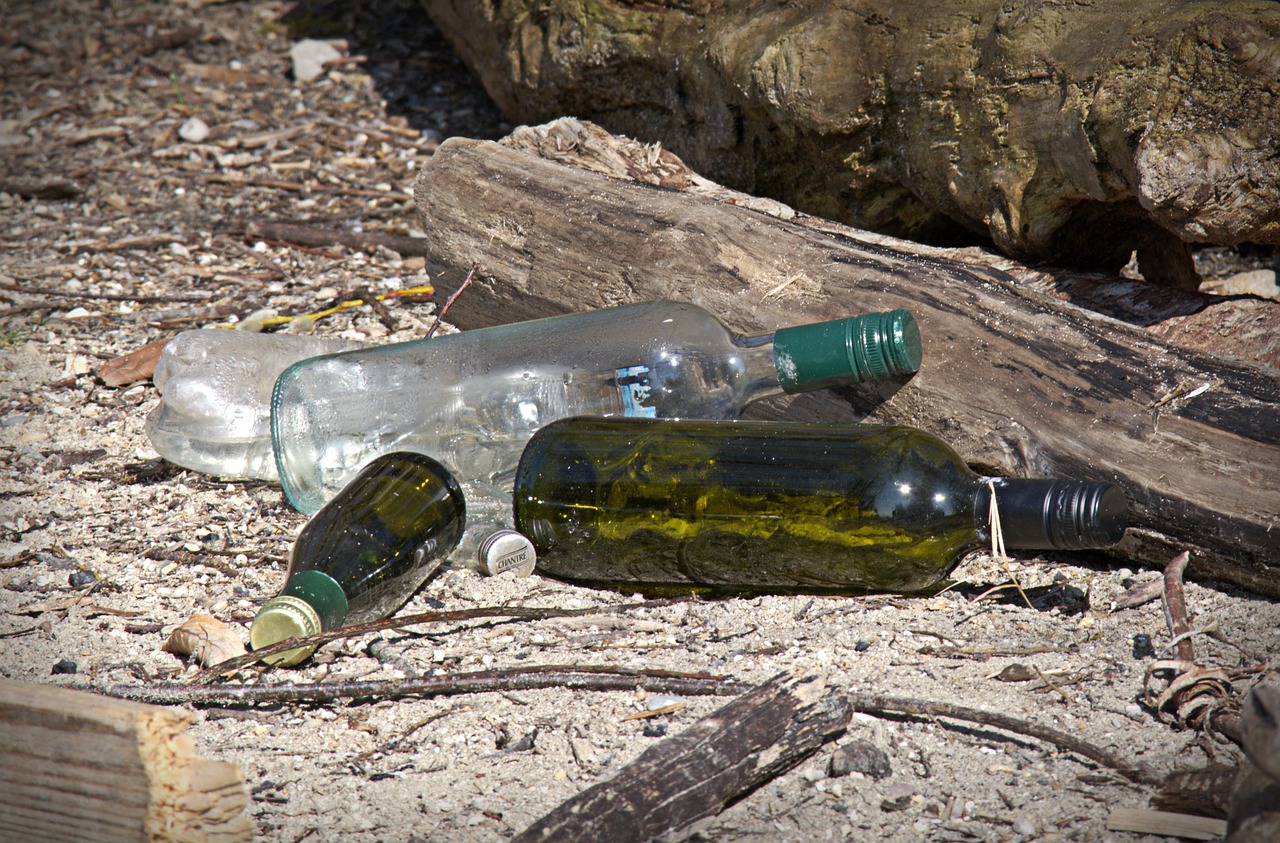
How to Properly Dispose of E-Waste
When it comes to disposing of electronic waste, the first step is to understand that responsibility is key. Simply tossing your old gadgets in the trash is not just lazy; it's harmful to our planet. Instead, there are several effective methods to ensure that your e-waste is handled properly. For starters, consider recycling programs that are specifically designed for electronics. Many communities offer designated days for e-waste collection, where you can drop off your old devices without worrying about their impact on the environment.
Another option is to donate your working electronics. Many schools, charities, and non-profits are often in need of functional devices. By donating, you not only extend the life of your electronics but also help someone in need. Just make sure to check the condition of the device and ensure that it meets the standards of the organization you’re donating to.
It’s also essential to be aware of local disposal guidelines. Each area may have different rules regarding e-waste disposal. For instance, some cities have specific recycling centers that accept various electronic items, while others may have restrictions on what can be disposed of in regular trash. To make this process easier, you can often find information on your local government’s website about designated e-waste recycling locations and any upcoming collection events.
In addition to these methods, you can also look for certified recyclers. These are organizations that follow strict guidelines to ensure that e-waste is recycled in an environmentally friendly manner. They often have the necessary equipment to safely dismantle electronics and recover valuable materials without releasing harmful substances into the environment. Here’s a quick table to summarize the different disposal options:
| Disposal Method | Description | Benefits |
|---|---|---|
| Recycling Programs | Community events for e-waste collection. | Environmentally safe disposal. |
| Donation | Giving working electronics to those in need. | Helps others and reduces waste. |
| Certified Recyclers | Facilities that safely process e-waste. | Ensures proper handling and recovery of materials. |
Lastly, don’t forget to spread the word! Share your knowledge about e-waste disposal with friends and family. Encourage them to join you in these responsible practices. After all, every small action counts towards a larger impact. By making informed choices about how we dispose of our electronics, we can significantly reduce our carbon footprint and contribute to a healthier planet.
Q: What is e-waste?
A: E-waste refers to discarded electronic devices such as computers, smartphones, and televisions that are no longer in use.
Q: Can I throw my old electronics in the regular trash?
A: No, it’s important to dispose of e-waste responsibly as it can contain hazardous materials that harm the environment.
Q: How can I find a recycling center near me?
A: You can search online for e-waste recycling centers in your area or check your local government’s website for information on collection events.
Q: What should I do with my personal data before disposing of my electronics?
A: Always back up your data and perform a factory reset on your devices to ensure that your personal information is removed.
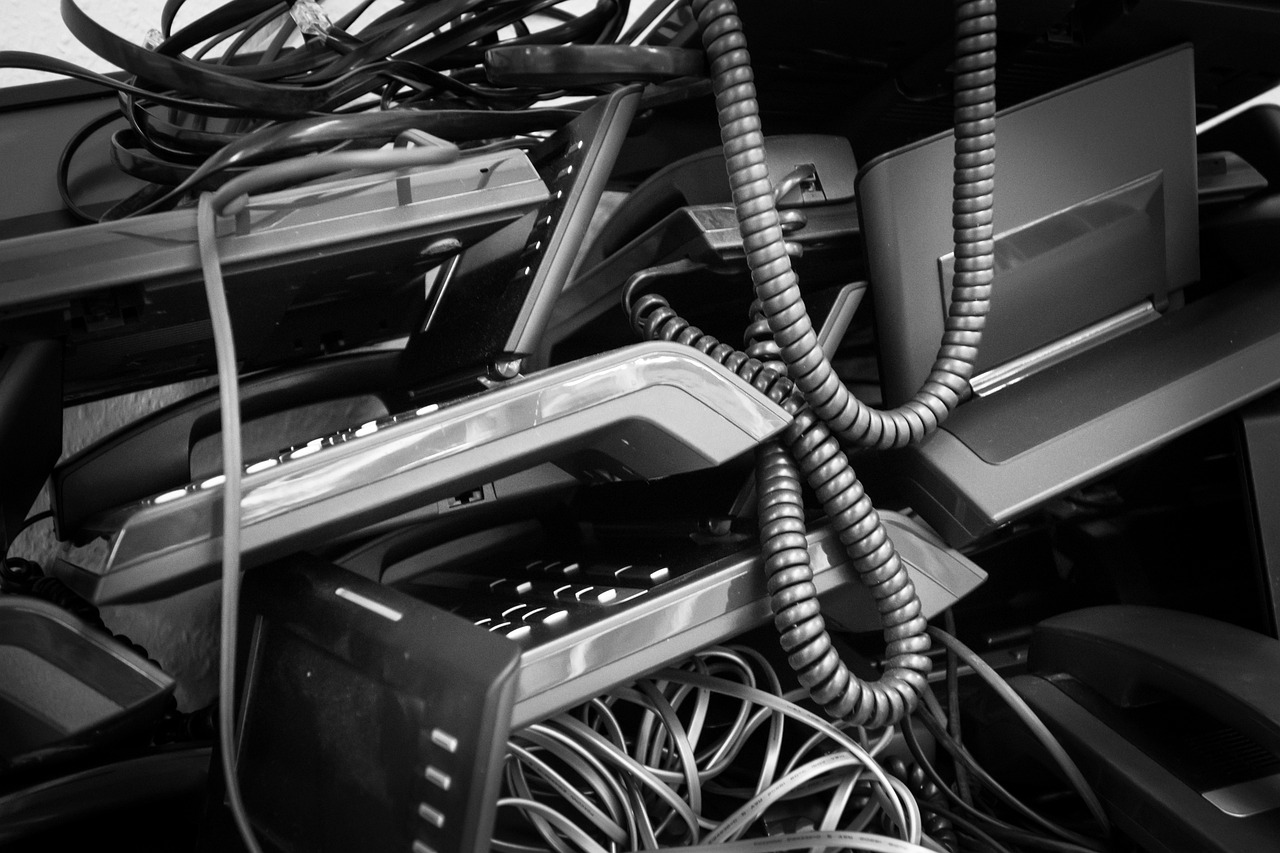
Finding E-Waste Recycling Centers
Finding a suitable e-waste recycling center is a crucial step in ensuring that your old electronics are disposed of responsibly. It’s not just about tossing your gadgets into the trash; it’s about making a conscious effort to protect our planet. But how do you go about locating these centers? Well, the good news is that there are several resources available to help you find the right place to recycle your e-waste.
First and foremost, a simple online search can yield a wealth of information. By entering phrases like “e-waste recycling near me” or “electronic waste disposal centers,” you can quickly generate a list of local facilities. Many cities and towns have dedicated websites that provide information about recycling programs and drop-off locations. Additionally, you can check with your local waste management authority, as they often have partnerships with certified recyclers.
Another effective method is to utilize national databases and websites dedicated to e-waste recycling. For instance, organizations like Earth911 and Call2Recycle offer extensive directories of recycling centers based on your zip code. These platforms not only help you find a nearby location but also provide details about what types of electronics can be recycled and any associated fees. Some centers may even offer incentives such as gift cards for recycling your old devices, making the process even more appealing!
It's also essential to ensure that the recycling center you choose is certified. Look for certifications like R2 (Responsible Recycling) and e-Stewards, which indicate that the facility follows strict environmental and safety standards. This ensures that your e-waste will be handled properly and that harmful materials will be disposed of in a way that minimizes environmental impact.
Moreover, consider participating in community events that focus on e-waste recycling. Many local governments and organizations host periodic collection drives where residents can drop off their old electronics for safe disposal. These events not only make recycling convenient but also foster community engagement and awareness about e-waste issues.
In summary, finding e-waste recycling centers is easier than you might think. With a little research and the right resources, you can contribute to a healthier planet while responsibly disposing of your electronic waste. Remember, every small effort counts in the fight against e-waste!
- What types of items can I recycle? Most e-waste recycling centers accept items like computers, smartphones, tablets, televisions, and other electronic devices. Always check with the specific center for their accepted items list.
- Are there any fees for recycling e-waste? Some centers may charge a fee for recycling certain items, while others offer free services. It’s best to inquire ahead of time to avoid surprises.
- Can I recycle batteries? Yes, many e-waste recycling centers also accept batteries, but it’s important to check if they have specific guidelines for battery disposal.
- What happens to my e-waste after I drop it off? Certified recycling centers will dismantle and process your e-waste, ensuring that hazardous materials are handled safely and that valuable components are recovered for reuse.
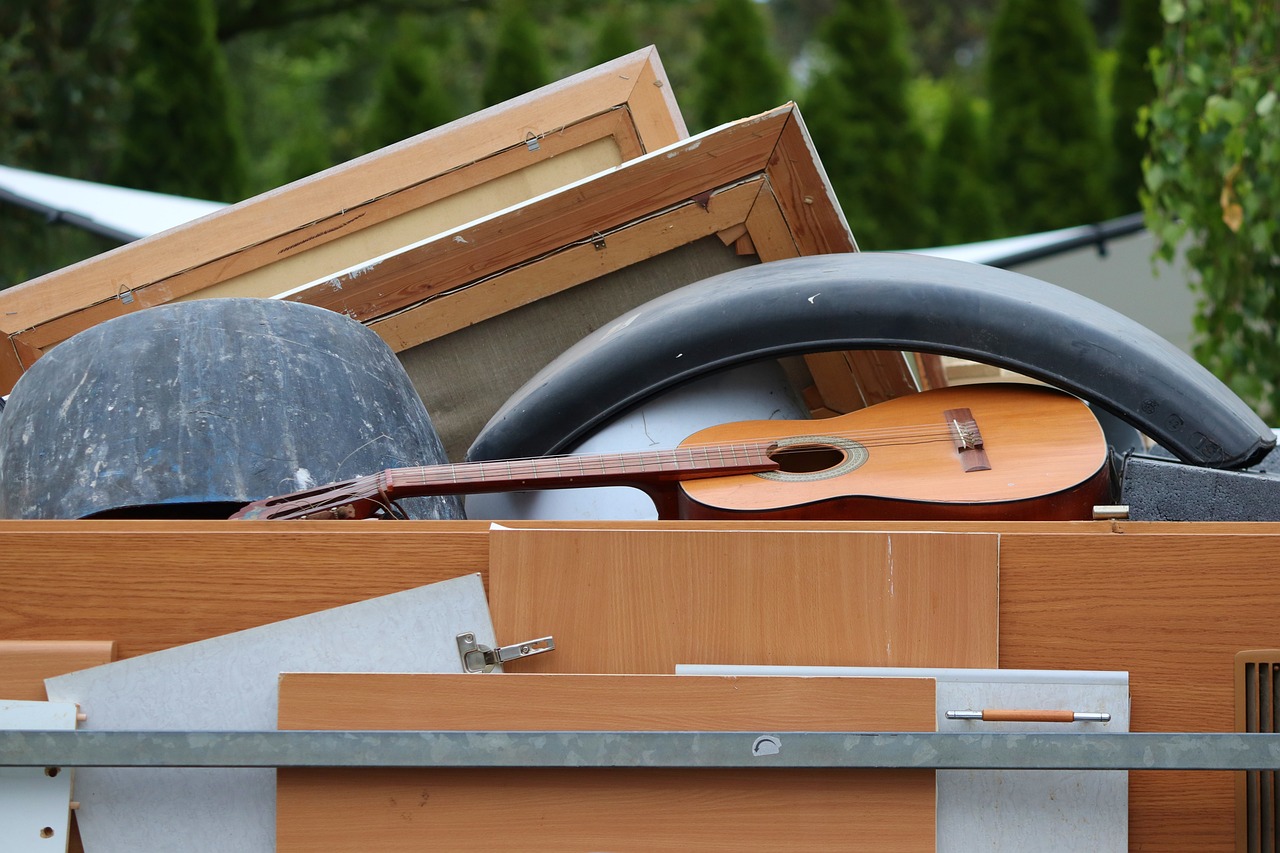
Community Initiatives and Events
Community initiatives and events are pivotal in tackling the growing issue of electronic waste. These gatherings not only raise awareness but also provide a platform for residents to engage in responsible e-waste disposal. Imagine a neighborhood coming together, where every household brings their old gadgets, and in return, they learn about the importance of recycling. It’s not just about getting rid of unwanted electronics; it’s about fostering a culture of sustainability and responsibility.
Many cities and towns organize regular e-waste collection events, where community members can drop off their old electronics safely. These events often feature local organizations that specialize in e-waste recycling, offering educational workshops on how to properly dispose of electronic devices. For instance, a local library might host a workshop that explains the environmental impacts of e-waste and demonstrates how to dismantle old devices safely. Such initiatives empower individuals with knowledge and practical skills, making them more conscious of their consumption habits.
Moreover, community events can take various forms, from clean-up drives to educational fairs. For example, a clean-up drive might involve not only e-waste collection but also the cleaning of parks or public spaces, encouraging a sense of community pride. Educational fairs can feature booths from local recycling companies, where residents can learn about the recycling process and the importance of keeping hazardous materials out of landfills.
Here’s a quick look at some common types of community initiatives that promote e-waste recycling:
- Collection Drives: Scheduled events where residents can drop off their e-waste for safe disposal.
- Workshops: Educational sessions that teach community members about the dangers of e-waste and how to recycle responsibly.
- Partnerships: Collaborations with local businesses and schools to promote e-waste awareness and recycling.
Furthermore, leveraging social media platforms can significantly enhance participation in these initiatives. By creating event pages and sharing informative content, organizers can reach a broader audience and encourage more residents to take part. Additionally, local governments can play a crucial role by promoting these events through newsletters and community bulletins, ensuring that everyone is informed about upcoming opportunities to recycle.
In essence, community initiatives and events are essential for building a collective effort against e-waste. They not only facilitate proper disposal but also cultivate a sense of responsibility among residents. When individuals see their neighbors participating, it fosters a community spirit that encourages everyone to join in. So, the next time you hear about an e-waste collection event in your area, consider participating. Together, we can make a significant impact on reducing electronic waste and promoting a healthier environment.
What is e-waste? E-waste, or electronic waste, refers to discarded electrical or electronic devices. This includes anything from old computers and smartphones to appliances and televisions.
Why is proper e-waste disposal important? Proper disposal prevents hazardous materials from contaminating the environment and helps recover valuable resources through recycling.
How can I find e-waste recycling events in my community? Check local government websites, community bulletin boards, or social media for announcements about upcoming e-waste recycling events.
Can I donate my old electronics instead of recycling them? Yes! Many organizations accept donations of working electronics, which can be reused or refurbished to help those in need.
What should I do with personal data on my devices before recycling? Always wipe your devices clean of personal data before disposal. Use factory reset options or software designed for secure data erasure.
Frequently Asked Questions
- What is e-waste?
E-waste, or electronic waste, refers to discarded electronic devices such as computers, smartphones, and televisions. These items often contain hazardous materials and should be disposed of properly to avoid environmental harm.
- Why is proper disposal of e-waste important?
Proper disposal is crucial because e-waste can release toxic substances into the environment, harming ecosystems and human health. By managing e-waste responsibly, we can reduce pollution and conserve valuable resources.
- How can I identify e-waste in my home?
You can identify e-waste by looking for old or broken electronic devices that you no longer use. Common examples include outdated computers, broken smartphones, and non-functioning appliances.
- What hazardous materials are found in e-waste?
E-waste often contains hazardous materials such as lead, mercury, and cadmium. These substances can pose serious health risks if not handled and disposed of properly.
- What are the benefits of recycling e-waste?
Recycling e-waste helps conserve natural resources, reduces pollution, and minimizes landfill waste. It also allows valuable materials to be recovered and reused in the manufacturing of new products.
- How can I properly dispose of my e-waste?
You can properly dispose of e-waste by finding local recycling centers, participating in community e-waste events, or donating functional electronics to organizations that accept them.
- Where can I find e-waste recycling centers?
You can find e-waste recycling centers by searching online for local facilities or checking with your city’s waste management department. Make sure to use certified recyclers to ensure safe disposal.
- Are there community initiatives for e-waste recycling?
Yes! Many communities organize e-waste recycling events and programs to promote responsible disposal. Check local community boards or websites for upcoming events in your area.

